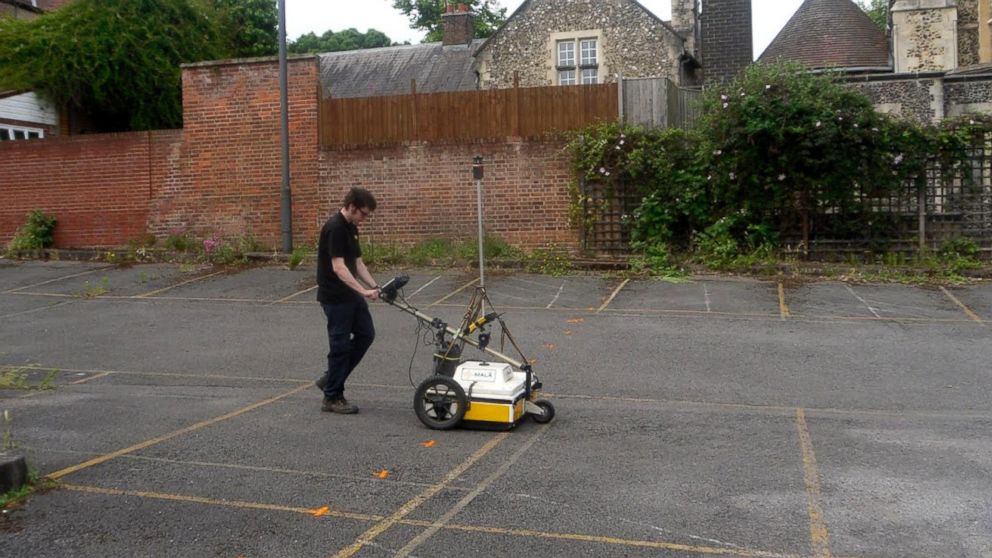Brits Begin Search for Another Lost King's Remains in Parking Lot
Historians found Richard III in a parking lot in Leicester, England.

— -- Historians are starting the search for another lost king thought to be buried under a parking lot. King Henry I of England, who took the throne in year 1100, died without an heir in 1135 of an illness thought to be brought on by eating lampreys, a type of jawless fish, against his doctor's orders.
His body was interred at Reading Abbey, according to historian C. Warren Hollister's book Henry I. Much of the abbey was destroyed in the centuries since and the monarch's remains were lost among the rubble and ensuing development.
Phillipa Langley, who was instrumental in helping to discover the remains of King Richard III under a parking lot in Leicester nearly four years ago, reportedly phoned John Mullaney, a historian and author of Reading's Abbey Quarter, to start a new project to find another king's resting place, according to Mullaney's blog.
"It has to be said that initially there was a great deal of doubt about aims of the Project. But Historic England thought it a worthwhile exercise and they would support a Ground Penetrating Radar (GPR) survey of the area," Mullaney wrote.
Ground-penetrating radar is a process through which it is possible to detect objects below solid concrete, according to expert David J. Daniels, who wrote a book on the subject.
Much has changed since Henry I's death in 1135, including the abbey. The lost king's burial site is now thought to be located under a parking lot near a local prison and children's playground.
Workers began surveying the space using GPR technology last Friday, according to to Mullaney.
"What we shall discover we do not know - maybe much, maybe little. As I write this all I can do is wait in hope that all our work will tell us more about the story of our town, about one of England's greatest buildings and about the King who was buried in Reading," he said in a blog post about the effort.